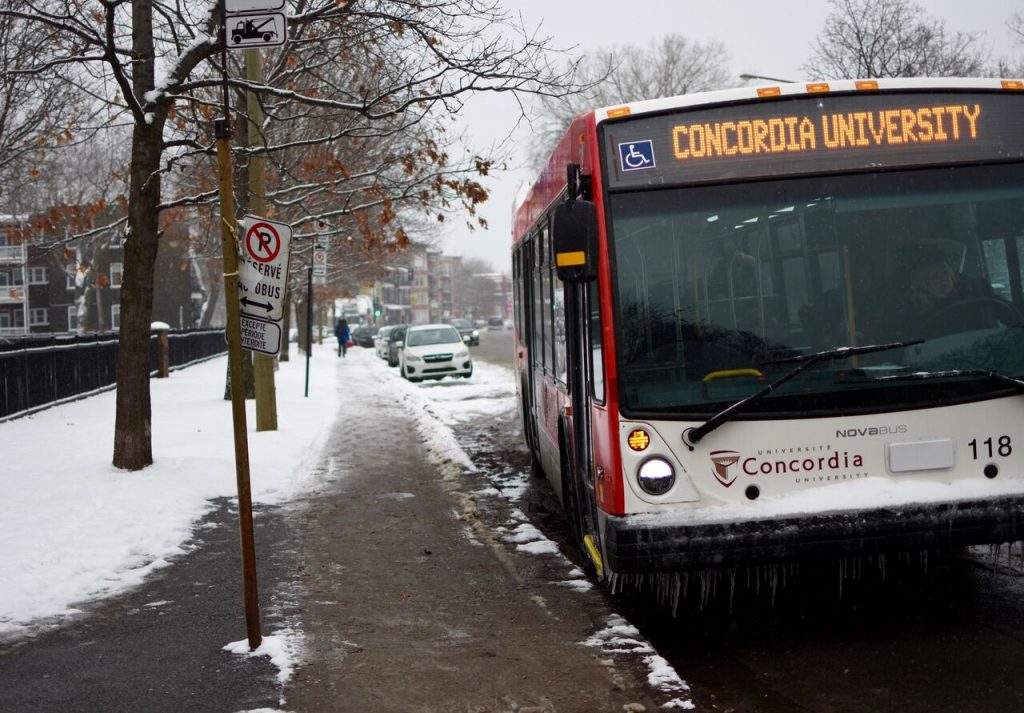Looking back at the Concordia shuttle since its debut in 1976
Concordia’s shuttle has changed a lot since its inception 40 years ago. Originally proposed in the 1960s as part of the merger between Loyola College and Sir George Williams University, the shuttle was a critical part of the formation of what is now Concordia University.
Administrators at both schools agreed during their negotiations that students needed a way to get to and from classes at the picturesque Loyola campus in the sleepy west-end NDG neighbourhood and the SGW campus on De Maisonneuve in downtown Montreal.
According to Desmond O’Neill, longtime manager of Concordia’s shuttle system, the first recorded evidence of the shuttle in action is a photo from 1976 which shows the lone Dodge panel van that would make the journey only a few times per day. Students had to make reservations in advance to make sure they had a seat.
Since those humble beginnings, the shuttle has grown to match the development of the university. The school now runs four buses simultaneously from Monday to Friday, with 94 departures per day from both the SGW and Loyola campus, according to Concordia’s office of property management. Driver-reported passenger data shows that the shuttle system moved 80,000 passengers in September 2016, at an average of over 4,000 riders per day.
During the 2015-2016 school year, over 700,000 Concordia students and faculty members took advantage of the free system, according to O’Neill.
The system isn’t without issues. If you’ve taken the shuttle recently, you may have noticed the bus taking a different route every time to bypass construction and traffic. In some cases, this has made the travel time longer.
O’Neill said while he understands riders’ confusion, the the current state of road work in Montreal makes shuttle consistency more difficult than ever. According to O’Neill, drivers often do not know about road closures ahead of time and are forced to adjust their routes on the fly. He said he wishes the city would alert him about construction so that he could warn drivers in advance.

“We do have some contact with city government but it’s not the best,” said O’Neill. “When the city does road work, they may not know the 100 people or businesses it affects.”
According to O’Neill, ideally there would only be a couple of routes that drivers would take but, because of constant construction and changing traffic patterns, bus drivers have to utilize up to five alternate routes. Drivers talk to each other via wireless headsets while en route, updating their colleagues about traffic and construction situations.
O’Neill said he is pleased with how the shuttle service generally meets the needs of its users, but that he’s always open to suggestions from students.
Concordia student and cyclist Ayrton Wakfer wants to see bike racks added to the buses.
“When I bike to Loyola and it starts raining, I know that I’ll have to ride home in the rain,” said Wakfer. “It would be great if I could put my bike on the front of shuttle.”
According to O’Neill, the shuttle system plans to install a screen on the Hall building that will indicate the location of all the buses via GPS, and there is talk of adding WiFi capability to the shuttles so students can study during their commute.
When Montreal road work calms down in 18 months and these new features are implemented, the Loyola-SGW shuttle is poised to continue its impressive run, now 40 years in the making.




